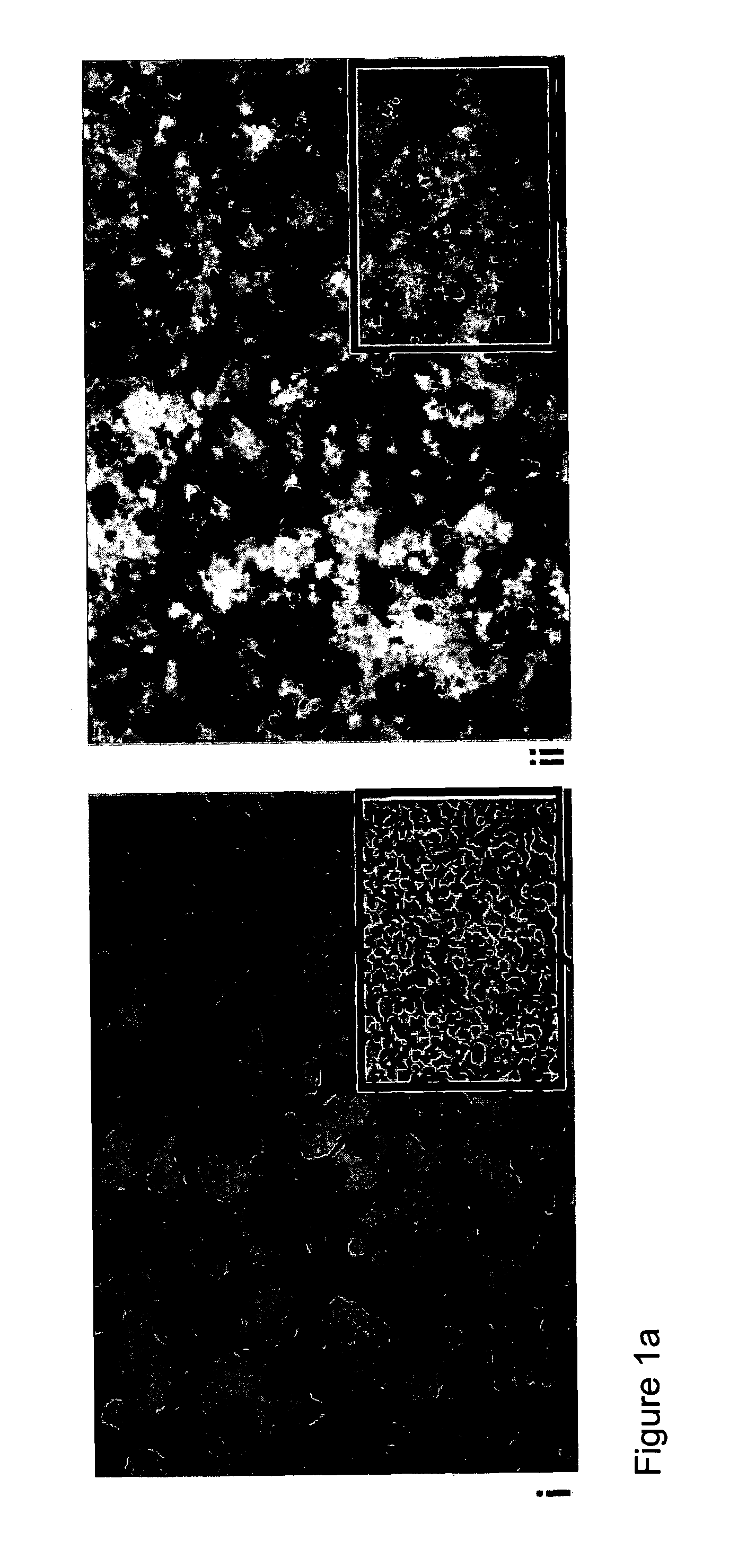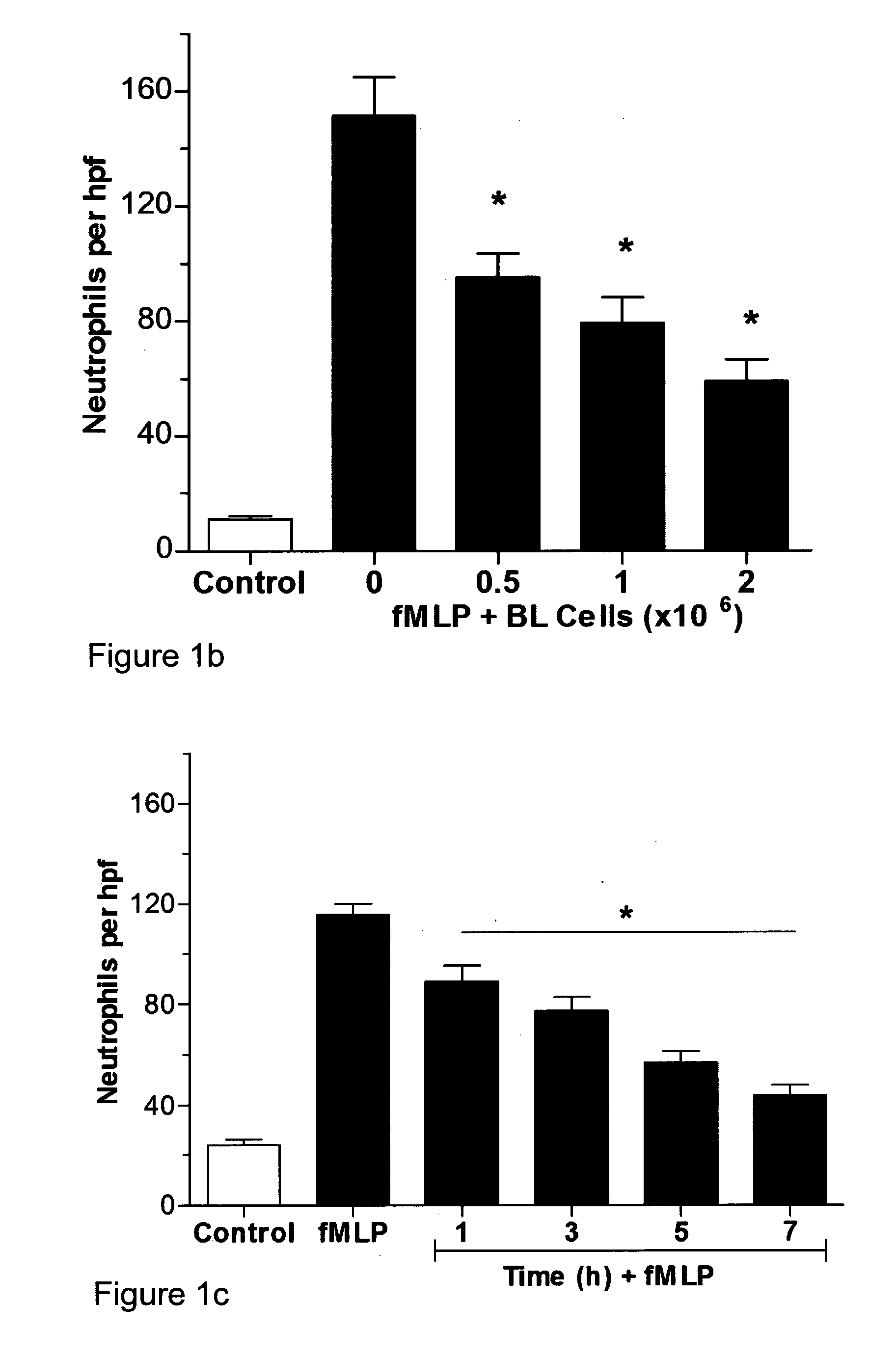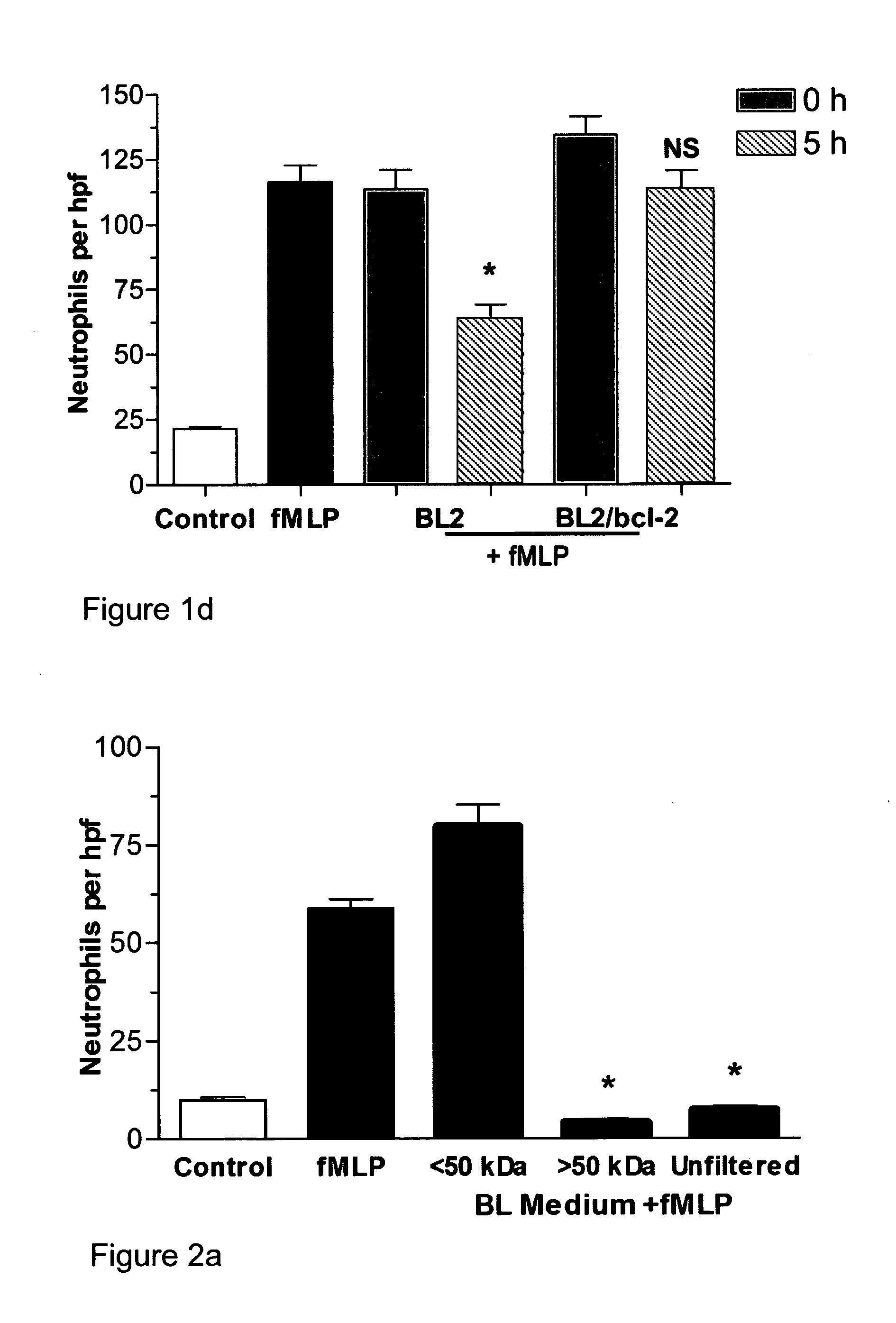Methods and compositions
a technology of granulocytes and compositions, applied in the field of modulating granulocytes, can solve the problems of little attention
- Summary
- Abstract
- Description
- Claims
- Application Information
AI Technical Summary
Benefits of technology
Problems solved by technology
Method used
Image
Examples
example 1
Apoptotic Lymphoma Cells Release a Factor that Prevents Neutrophil Migration
[0141]The inventors postulated that the factors released by apoptotic cells include negative regulators of neutrophil chemoattraction and that such factors may also act to limit neutrophil migration to sites of inflammation. The inventors initially analysed Burkitt lymphoma (BL) as a model tissue since this tumour displays high levels of apoptosis and, as is characteristic of all sites displaying high rates of apoptosis, marked infiltration by macrophages that engulf the apoptotic cells, giving rise to the typical ‘starry sky’ histological appearance of this tumour. While macrophages are in abundance, however, neutrophils are absent (FIG. 1a). The inventors next assessed the effects of BL cells on the migratory activity of neutrophils in vitro. Using a Boyden-type chemotaxis assay in which neutrophils were added on top of a transwell filter and were induced under the influence of fMLP to migrate towards the ...
example 2
Identification of Lactoferrin as Inhibitory Factor
[0142]The molecular weight of the inhibitory factor(s) was determined. Briefly, BL2-conditioned media (24 h at 37° C.) were fractionated using filters with specific molecular weight cut-off sizes. Using 50 kDa filter, the >50 kDa and a and show that the inhibitory factor(s) have a molecular weight of over 50 kDa.
[0143]Ion exchange analysis was used to determine the μl of the inhibitory factor(s), the results being illustrated in FIG. 2b. Q (+ve charge) Sepharose beads were used in order to distinguish positive and negatively charged molecules in the >50 kDa fraction of the BL medium. BL medium was complexed with positively charged beads (Q beads) to allow negatively charged molecules to become bound to bead surface. Unbound molecules (Q1 fraction; +vely charged) were collected, whereas bound molecules were eluted from the beads (Q2 fraction; −vely charged). Neutrophil migration towards these fractions in the presence of fMLP (100 nM)...
example 3
Specificity of Migration Inhibitory Effect of Lactoferrin
[0146]To determine whether, amongst professional phagocytes, the migration-inhibitory effects of lactoferrin were specific to neutrophils, The inventors analysed its effects on monocyte and macrophage migration in vitro. As shown in FIG. 3c, chemotaxis of mononuclear phagocytes was unimpaired by lactoferrin. The inventors further assessed whether lactoferrin acted by inhibiting neutrophil migration or promoting neutrophil repulsion. In chemotaxis assays, in which The inventors added lactoferrin to the upper chamber along with neutrophils. The inventors observed inhibition of neutrophil migration towards fMLP and control medium (FIG. 3e), suggesting that lactoferrin exerts a direct effect on neutrophils by inhibiting their migratory ability and not by forcing them to migrate in all directions away from it. As lactoferrin belongs to the transferrin family of iron-binding proteins. The inventors further examined whether its homol...
PUM
| Property | Measurement | Unit |
|---|---|---|
| Concentration | aaaaa | aaaaa |
Abstract
Description
Claims
Application Information
 Login to View More
Login to View More - R&D
- Intellectual Property
- Life Sciences
- Materials
- Tech Scout
- Unparalleled Data Quality
- Higher Quality Content
- 60% Fewer Hallucinations
Browse by: Latest US Patents, China's latest patents, Technical Efficacy Thesaurus, Application Domain, Technology Topic, Popular Technical Reports.
© 2025 PatSnap. All rights reserved.Legal|Privacy policy|Modern Slavery Act Transparency Statement|Sitemap|About US| Contact US: help@patsnap.com



